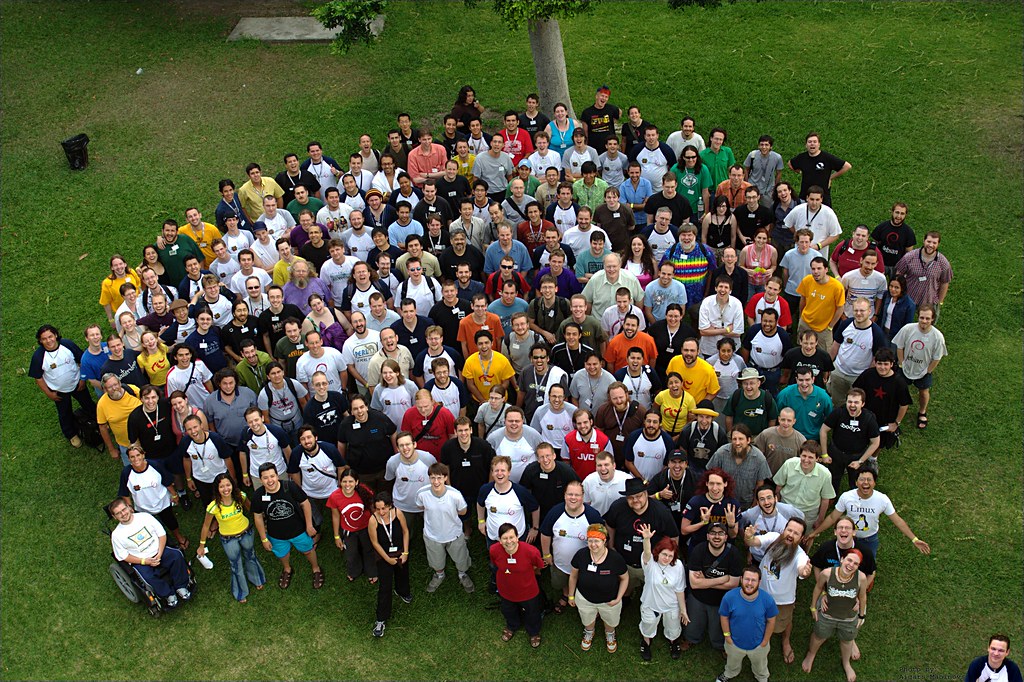A leader is one who knows the way, goes the way, and shows the way. —John Maxwell
These are four examples of effective leadership in the digital age.
#1. Autocratic
Example and Challenges:
The late Steve Jobs greatly exemplified this while he was still with Apple Inc. and made sure that the company only brings excellence, if not perfection, to the table. He created a heightened sense of tension in the workplace, even fear among employees and often neglected employees’ time, such as their vacation leave, in pursuit of perfection (commonly known as “STEVE REQUEST”). He hampered creative freedom which is the fuel for innovation
Image from FlickrAdvantages:
- The highest level of standard was strictly upheld and adhered.
- Premium quality was ensured.
- Everything was accomplished quickly.
- The company had a clear goal and exactly followed the path to achieving that.
- Employees were always on top of their game due to Jobs’ perfectionist nature.
- Employees were able to achieve things beyond their perceived capacity because of this desire to attain but perfection.
- Jobs’ obsession with excellence made Apple Inc. the giant tech. company it is today.
What can we learn?
Discipline is a good teacher and the pursuit of excellence will take you to great heights, far higher than you can imagine.
Quality is of utmost priority and will give back a hundredfold plus premium quality is what drives a successful digital marketing business.
#2. Democratic
Example and Challenges:
Tech. companies are increasingly adhering to the principles of democracy when it comes to dealing with company issues and improving products and services. Examples are Facebook and Google – they’ve fostered an open environment to address employees’ questions, predicaments, and opinions but in turn rather slowed processes like decision making. The tendency was to loosen company focus by having many voices

Advantages:
- Employees felt valued and empowered and in turn strived to think and do better.
- Gave way to collaborative efforts
- Resulted to a more efficient communication among employees, even to a better management-employee relationship
- Kept the employees in check regarding their perspective of and commitment to the company
What can we learn?
Such freedom will empower your employees and boost your company morale. An open communication will help you attain a more efficient collaboration and communication or relationship within your company. Various opinions will likely provide valuable insight to your company.
#3. Transactional
Example and Challenges:
The transactional leadership is a rewards-punishment system based on a person’s performance. Facebook founder Mark Zuckerberg was notorious for this kind of leadership. Create a stifling environment and like social media buzz, they are moths turning to flame. This resulted in a high staff turnover (Facebook’s hiring and firing history) and also hampered innovation among Microsoft employees – everyone wanting to outdo one another for the sake of staying longer rather than taking risks by creating something entirely new.

Advantages:
- Facebook’s benefits system was rewarding: better projects for the best engineers, big financial incentives for great business executives, etc., and a big motivator
- Brought out the best in people as they feared to be labelled as C-players or ranked as 1 or 2 according to Facebook’s 1-5 ranking.
- People were compensated for their hardwork and the process was transparent. Their success or failure depended on their performance.
What can we learn?
The incentive system is effective for companies that are results-based and this will act as a key motivator for your employees who benefit from external rewards. The rewards-punishment system will be their driving force to work beyond their perceived limitations (in order to rank better).
#4. Transformational
Example and Challenges:
Best adopted by Google where they implement the “20% rule” in which employees can spend 20% of their time on personal projects related to the company. An increased sense of creative freedom gave way to an excess of product items which are not necessarily profitable. This allowed for various small teams to work on different projects which in turn somehow loosened the focus of the company.

Advantages:
- Google remained a constant innovator in the tech. industry.
- The 20% rule paved way to Gmail, one of Google’s most successful innovations.
- This working atmosphere motivated a lot of people into working hard and even pursuing their dreams. It fostered a healthy, positive, and passionate working environment.
- Increased job satisfaction and commitment among employees
- Paved way for incredible innovations
- Employees gave more than what was expected of them.
What can we learn?
Creative freedom drives innovation and given the creative freedom, you can achieve the greatest of things. Your imagination is the limit. Personal development will lead to an overall better employee plus satisfaction and fulfillment among your employees will yield better work performances.
__________________________________________________________________________________
 Connect with Tweak Your Biz:
Connect with Tweak Your Biz:
Would you like to write for Tweak Your Biz?
Tweak Your Biz is an international, business advice community and online publication. Today it is read by over 140,000 business people each month (unique visitors, Google Analytics, December, 2013). See our review of 2013 for more information.
An outstanding title can increase tweets, Facebook Likes, and visitor traffic by 50% or more. Generate great titles for your articles and blog posts with the Tweak Your Biz Title Generator.


 Connect with Tweak Your Biz:
Connect with Tweak Your Biz:


